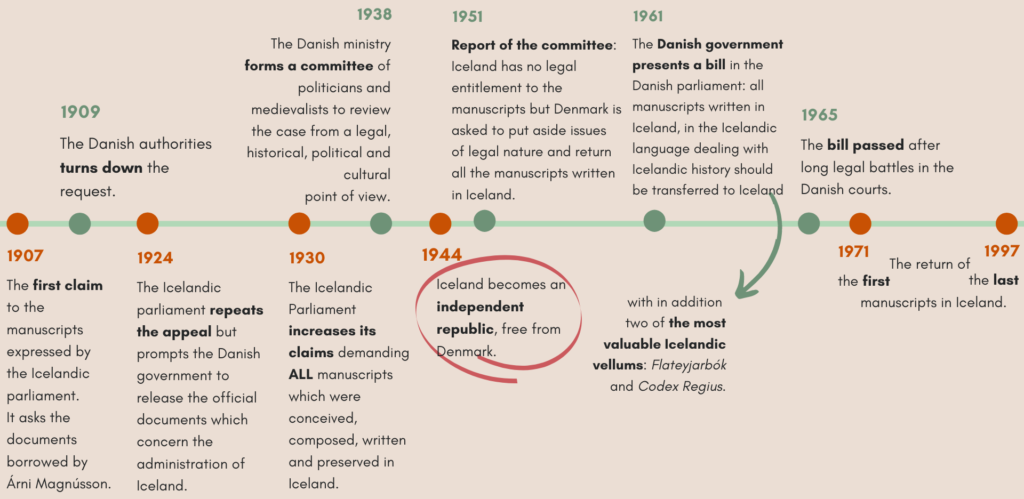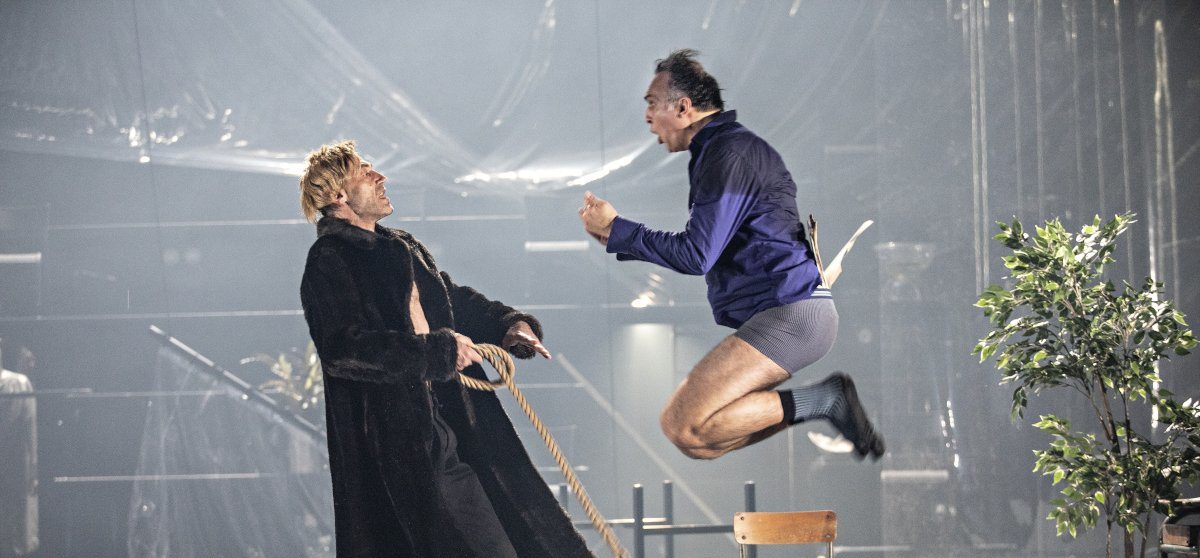A review on Guðmundur Hálfdánarson’s chapter “Interpreting the Nordic Past: Icelandic Medieval Manuscripts and the Construction of a Modern nation” in: The Uses of the Middle Ages in Modern European States edited by R. J. W. Ewans and Guy p. Marchal, 2011, pp. 52–71.
For some, a medieval manuscript is not very exciting: simply an old book with on the damaged pages a handwriting barely legible. But for others, “manuscripts are like a part of [them] […] like flesh of [their] flesh and blood of [their] blood” (55).
This striking sentence was part of a sentimental speech about Icelandic manuscripts delivered in 1939 by Alexander Johannesson[1], while Iceland was still in the middle of a legal fight to get back the Icelandic manuscripts that became Danish possessions in the 17th and 18th centuries. Some had been donated directly to the Danish king, but most of them had been collected by antiquarians or collectors like Árni Magnússon who was working for the Danish king. Since the beginning of the 20th century, the Icelandic parliament laid claim to the old books. That demand was reinforced when Iceland was freed from Denmark in 1944 and restored its political and cultural sovereignty which had been lost since the 13th century. Although Iceland finally became an independent nation, the most treasured Icelandic belongings still remained in the hands of the former ruling state: Denmark.

This timeline based on the information found in Guðmundur Hálfdánarson’s chapter reveals that neither Denmark nor Iceland wanted to give up the legal dispute. Even if the sagas were composed centuries before the emergence of nation as a concept, the author argues in an interesting way that they played a crucial role in the construction of Icelandic and Danish national identity.
For the Icelanders, the literary works preserved in the manuscripts are exclusively an Icelandic national heritage (62). The sagas were shaped by Icelandic tastes, reflected Icelandic medieval life, and exemplified the Icelandic literary abilities. Moreover, the old vellums are the only remaining vestiges from the Icelandic golden age, while Denmark preserved many medieval monuments as castles or churches (57).
From the Danish point of view, however, the Icelanders had no rights to the books, as they had been legally acquired by the Danish libraries. Intellectuals saw the idea of giving in to Icelandic demands as the final demise of the old Danish empire, so that preserving the manuscripts was in fact a question of national honor. They also argued that the cultural heritage kept in the manuscripts was common to the whole of Scandinavia, and therefore could not be the private property of one nation (57).

Guðmundur Hálfdánarson maintains that the debate did not only focus on the content of the books, but also on their modern use (67). According to the Danes, they left their mark on the medieval heritage: Danish intellectuals made a great effort to study the manuscripts, as the academic publications and translations of the manuscripts into modern languages show. In response to the Danish claims, the Icelanders assured that the manuscripts were much more than objects for philological research and that the medieval literature and history contained in the books was still a living reality in Iceland. After almost a century of debate, the Icelanders have eventually achieved their goal. Even if the Danes saw the return of the manuscripts as a generous gift[2], the Icelanders perceived it as receiving their rightful property that finally got back home “after centuries of exile in Copenhagen” (66). The author tries to remain neutral throughout his article, but he seems to take Iceland’s side at the end: it seems to have been a hard task for him to hide his joy about the return of the manuscripts to Iceland. Can we blame the Icelandic professor?

[1] He was the rector of the University of Iceland at that time.
[2] On this subject, see the very subjective article of the director of the Danish Royal Library Erland Kolding Nielsen: “Denmark to Iceland. A Case without Precedence: Delivering Back the Islandic Manuscripts 1971-1997”.

